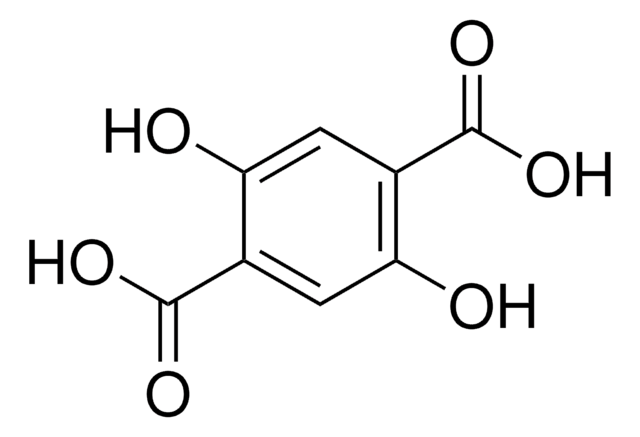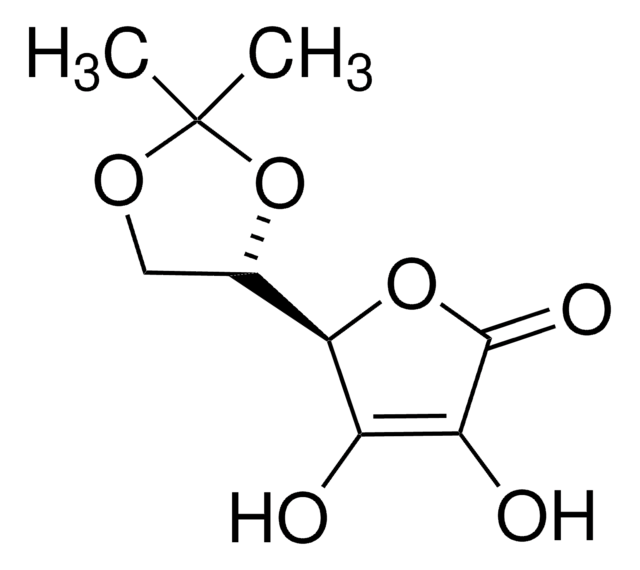Key Documents
261556
(L)-Dehydroascorbic acid
Synonim(y):
DHAA, Dehydro-L-ascorbate, Dehydro-L-ascorbic acid, L-threo-Dehydroascorbic acid, oxidized ascorbic acid, oxidized vitamin C
About This Item
Polecane produkty
Postać
powder
Poziom jakości
mp
228 °C (dec.) (lit.)
temp. przechowywania
−20°C
ciąg SMILES
OC[C@H](O)[C@H]1OC(=O)C(=O)C1=O
InChI
1S/C6H6O6/c7-1-2(8)5-3(9)4(10)6(11)12-5/h2,5,7-8H,1H2/t2-,5+/m0/s1
Klucz InChI
SBJKKFFYIZUCET-JLAZNSOCSA-N
Szukasz podobnych produktów? Odwiedź Przewodnik dotyczący porównywania produktów
Opis ogólny
DHA is a dimer when it is solid, but when it is dissolved in a solution, it becomes a monomer.
Zastosowanie
- Pyrano[3,4-b]indole derivatives by reacting with 2-hydroxymethylindole.
- (−)-ascorbyl phloroglucinol via stereoselective C-C bond formation reaction with phloroglucinol.
Kod klasy składowania
11 - Combustible Solids
Klasa zagrożenia wodnego (WGK)
WGK 3
Temperatura zapłonu (°F)
Not applicable
Temperatura zapłonu (°C)
Not applicable
Środki ochrony indywidualnej
dust mask type N95 (US), Eyeshields, Gloves
Wybierz jedną z najnowszych wersji:
Masz już ten produkt?
Dokumenty związane z niedawno zakupionymi produktami zostały zamieszczone w Bibliotece dokumentów.
Klienci oglądali również te produkty
Produkty
Jednoczesna analiza kwasu askorbinowego i dehydroaskorbinowego w różnych próbkach żywności za pomocą wysokosprawnej chromatografii cienkowarstwowej (HPTLC).
Protokoły
Separation of (L)-Dehydroascorbic acid; L-Ascorbic acid 20 μg/mL
Nasz zespół naukowców ma doświadczenie we wszystkich obszarach badań, w tym w naukach przyrodniczych, materiałoznawstwie, syntezie chemicznej, chromatografii, analityce i wielu innych dziedzinach.
Skontaktuj się z zespołem ds. pomocy technicznej









